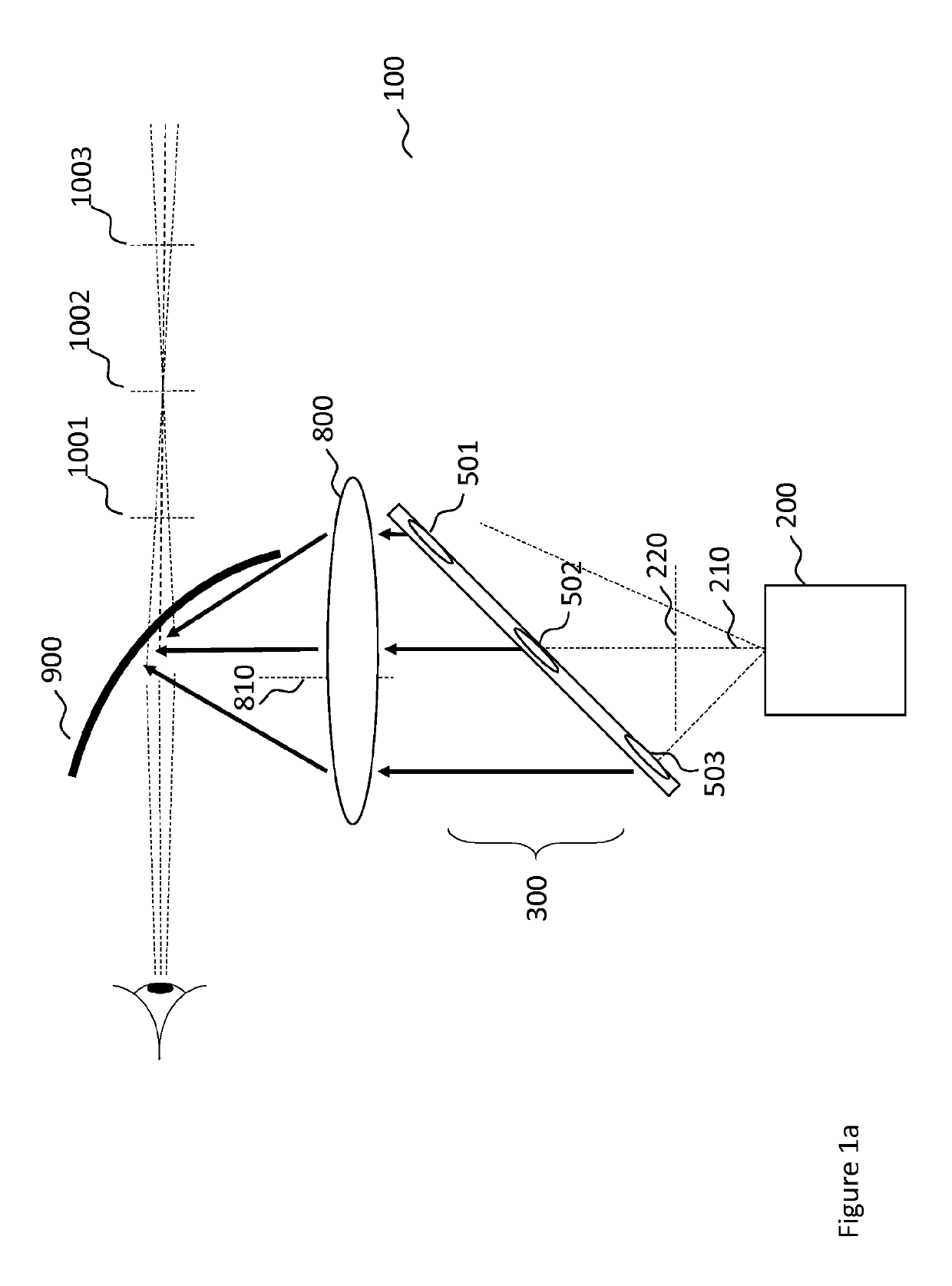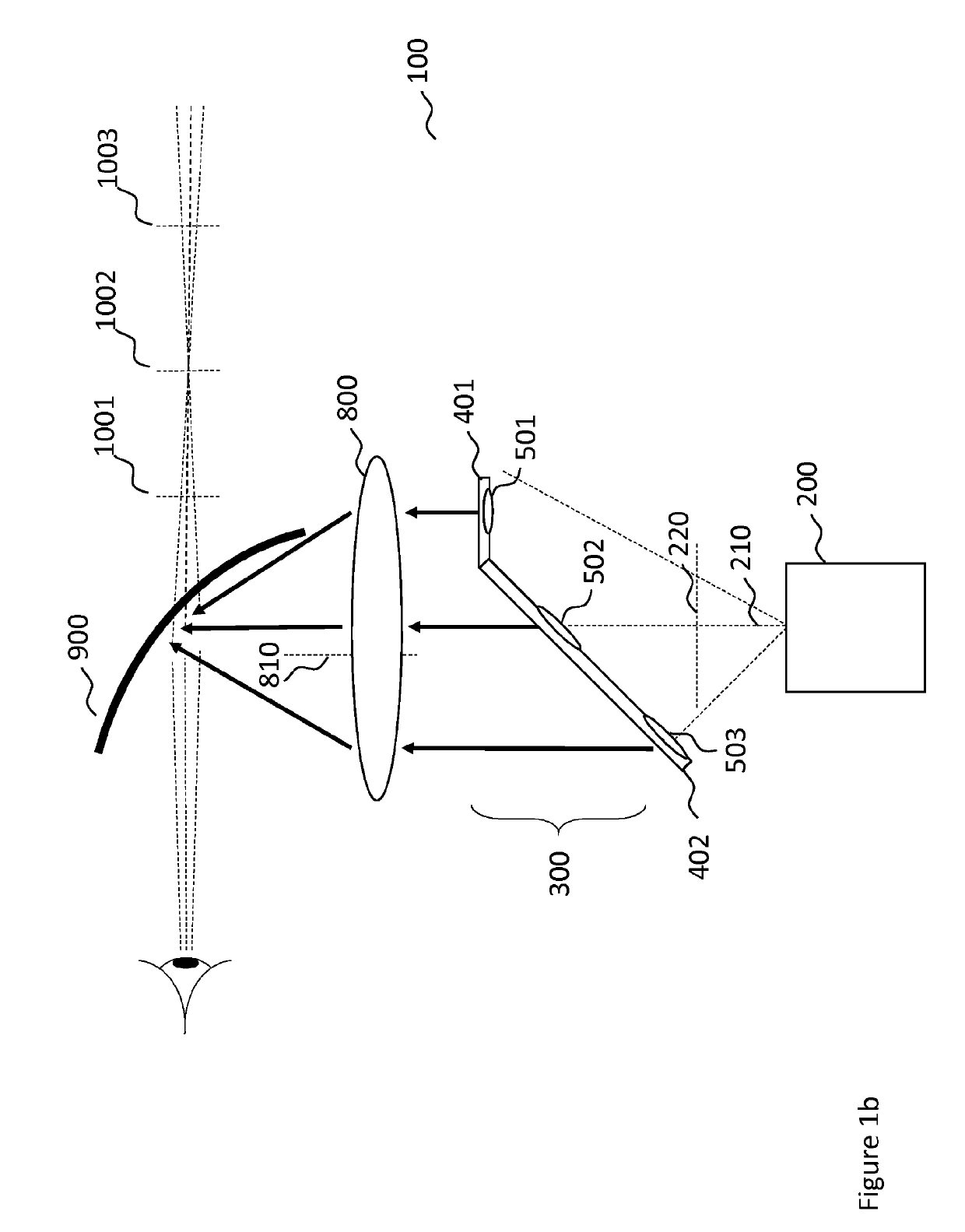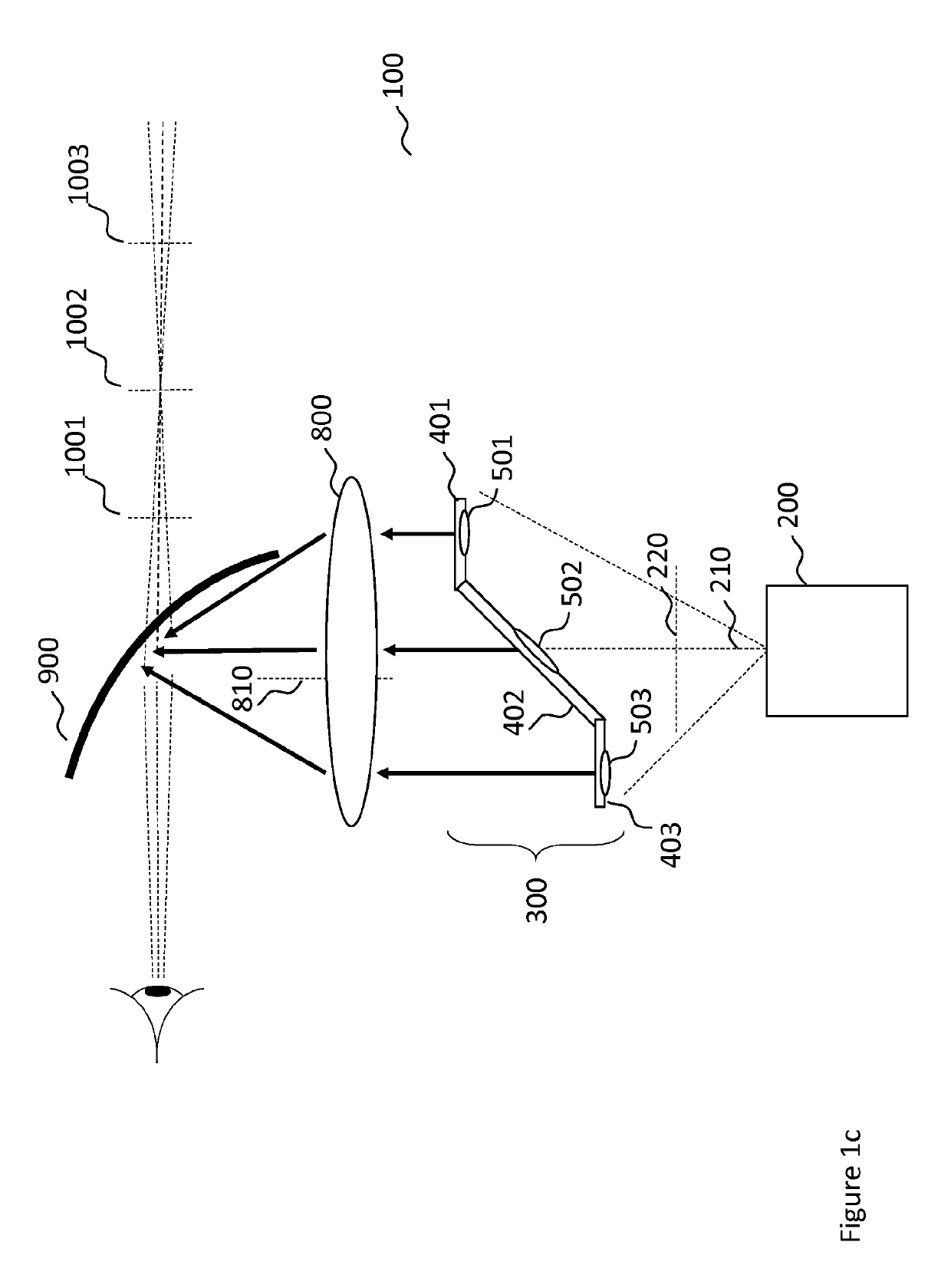Multi-depth display apparatus
- Summary
- Abstract
- Description
- Claims
- Application Information
AI Technical Summary
Benefits of technology
Problems solved by technology
Method used
Image
Examples
Embodiment Construction
[0048]In an aspect of the invention the apparatus and the display are installed in a vehicle, such as a motor vehicle. Whilst the following description is described with reference to a head-up display (HUD) of a motor vehicle, the disclosure, and concepts described herein are applicable to other forms of HUD (for example those installed on other forms of vehicles or wearable platforms such as helmets or goggles), as well as displays in general.
[0049]Particularly, but not exclusively, the disclosure relates to an apparatus for creating and projecting multi-dimensional 3-D augmented reality images onto a display screen, such as a windscreen if it is installed for use in a confined environment such as a vehicle which can be operated on land (on / off road or track), under or over sea, in air or space. The examples can be, but are not limited to, cars, buses, lorries, excavators, exoskeleton suit for heavy-duty tasks, motorcycles, trains, theme park rides; submarines, ships, boats, yachts...
PUM
 Login to View More
Login to View More Abstract
Description
Claims
Application Information
 Login to View More
Login to View More - R&D
- Intellectual Property
- Life Sciences
- Materials
- Tech Scout
- Unparalleled Data Quality
- Higher Quality Content
- 60% Fewer Hallucinations
Browse by: Latest US Patents, China's latest patents, Technical Efficacy Thesaurus, Application Domain, Technology Topic, Popular Technical Reports.
© 2025 PatSnap. All rights reserved.Legal|Privacy policy|Modern Slavery Act Transparency Statement|Sitemap|About US| Contact US: help@patsnap.com



